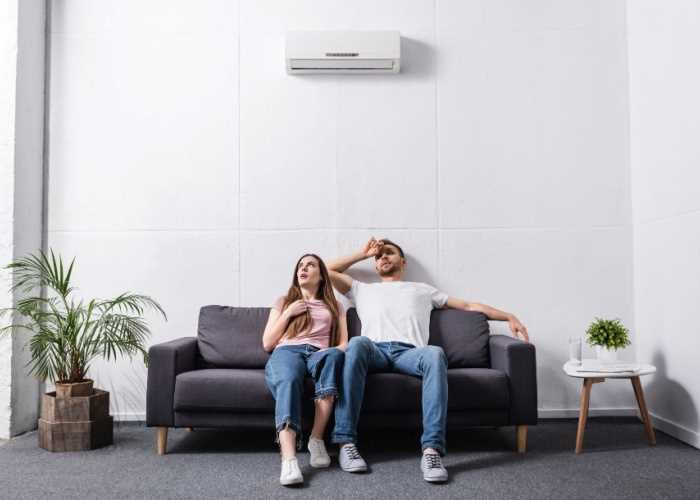Installing split-type air conditioning can be a great way to keep your home cool during the warmer months.
These systems are increasingly popular for their efficiency and ability to cool specific areas of your home. However, their performance heavily depends on proper installation.
Unfortunately, there are some installers out there who lack the knowledge and expertise to fit these systems correctly.
Relying on such a service may seem cost-effective upfront, but it can often lead to problems further down the line.
Before discussing the consequences, it's important to identify the signs that your split system air conditioner might have been installed incorrectly.
Some telltale signs include:
Inconsistent cooling: if one room feels much cooler or warmer than another, it could be a sign that the indoor unit is not properly positioned or calibrated.
Frequent breakdowns: regular malfunctions may indicate that the system was not installed to manufacturer specifications.
High energy bills: if your energy costs have spiked, your system might be overworking due to installation errors.
Unusual noises: strange sounds from the indoor or outdoor units can signal installation issues.
Water leaks: leaking water around the indoor unit usually points to drainage or condensate line problems.

An improperly installed split system often operates inefficiently. This inefficiency can result from incorrect sizing of the unit, poor placement or poorly connected refrigerant lines.
An inefficient system will struggle to cool your home effectively, leading to higher energy consumption and increased utility bills.
Incorrect installation can cause stress on key components of your split system, leading to premature wear and tear.
For example, if the refrigerant lines are not properly connected or the refrigerant levels are not accurately measured, the compressor could be overworked and damaged.
This could result in expensive repairs or even necessitate a complete system replacement sooner than expected.
If the indoor unit is not correctly sealed to the wall or if the condensate line is not properly managed, it can lead to moisture issues.
Excessive moisture can encourage mould growth within the unit, which can then be circulated throughout the room, degrading air quality and potentially affecting your health.
A split system that is not installed correctly can produce excessive noise.
This noise can stem from the indoor unit being improperly mounted, causing it to vibrate against the wall, or from the outdoor unit if it’s not placed on a stable, level surface.
Both of these issues not only cause disruption but also indicate potential problems that could worsen over time.
Improper installation can lead to safety concerns. For instance, if the electrical wiring is not done correctly, it could pose a fire risk.
Additionally, if the refrigerant lines are not properly sealed or are damaged, they could leak refrigerant, which is hazardous to both health and the environment.
Reputable manufacturers of split system air conditioners require installation by certified professionals to maintain the validity of the warranty.
If your system is installed by someone without proper qualifications or if the installation does not follow the manufacturer’s guidelines, you risk voiding the warranty.
This could leave you responsible for any repairs or replacements due to installation errors.
To avoid installation issues, hire a reputable and experienced air conditioning contractor. Look for professionals who are certified, insured, and have good reviews.
Recommendations from friends, family, or online reviews can help you find a trustworthy installer.
Your contractor should perform a thorough assessment of your home to determine the correct size of the air conditioning unit needed. A system that is too large or too small for your space will not operate efficiently.
Correct placement of the indoor and outdoor units is also crucial.
The indoor unit should be placed where it can distribute air evenly without obstructions, while the outdoor unit should be in a location with good airflow and away from direct sunlight.
Discuss placement options with your installer to ensure optimal performance.
While you don't need to be an expert, it helps to have a basic understanding of what a proper split system installation involves.
This includes ensuring secure mounting of the indoor unit, correct connection of refrigerant lines, proper refrigerant levels, and safe electrical wiring.
Don’t hesitate to ask your installer about their procedures and what steps they take to ensure a quality installation.
Before the installation, request a detailed quote that includes all aspects of the job, such as labour, materials, and any additional costs.
This will help you avoid surprises and ensure that everything needed for a proper installation is covered.
Regular maintenance is key to the long-term performance of your split system. Schedule annual inspections and tune-ups to keep your system running efficiently and to catch any potential issues early.
Choosing an inexperienced installer for your air conditioning might save you money initially, but it often results in frustrating and expensive issues later on.
At Loughborough Air Conditioning, we ensure your system is well designed, properly installed, and set up for long-term performance. We hold all the necessary qualifications, and employ a team of fully qualified, highly competent technicians.
